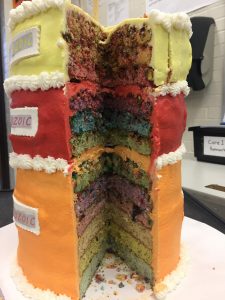TL;DR:
- Models are a great way to determine student understanding of content.
- Use exemplars to inspire students to do great things.
- Encourage students to let their passions fuel their creativity, and give them lots of loose parts to experiment with.
- Provide expectations, but let students determine how they rise to those expectations.
Student Designed Models
I am big on student designed models in my science classroom. It is so much easier to determine if a student understands the content (and the depth of their understanding) when I ask them to make a model that represents what they learned.
This week we are starting our last unit of the year, Earth’s History and the Diversity of Life. Basically, I have one month to teach my students about the 4.6 billion year history of our planet. No problem, right? Normally, this is the unit where students produce the best and most impressive models because they have had all year to really hone their skills. Here are the steps I follow to lead my students through the creation process.
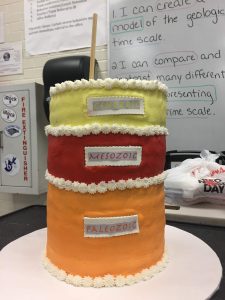
Geologic Time Scale Cake Model
Use Exemplars
I introduced the unit by using a model that a student had turned in and let me keep. I used it as a teaching tool, but explained that it was produced by a student. Students are often shocked at the quality of the work an 8th grader could produce. I love this reaction because it inspires them to believe that they too are capable of great things.
It is so much easier to determine if a student understands the content (and the depth of their understanding) when I ask them to make a model that represents what they learned. Click To TweetEncourage Creativity
When I introduce the goal of this model, I like to keep it open for creativity. I am very clear at the beginning of the process to tell my students that I do not want cookie cutter models that all look and sound the same. I tell them to find their strengths and make a model around that.
Students usually say they don’t know what to do or how to start at first. This is normal. The relationship building that I do at the beginning of the year (see my blog post on Relationship Building Grids) really helps to overcome this obstacle.
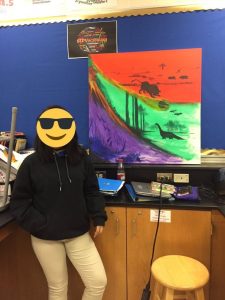
Geologic Time Scale Model Painting
Knowing what their interests are allows me to steer them towards their passions. Once their creative juices begin to flow and they actually allow themselves to have fun with the process, it is amazing how far they will go!
Provide Expectations, Not Rules
My students will all tell you that I have high expectations for the quality of work that they produce and submit. I constantly encourage my students to be risk takers and try something new (see my blog post on how to Dare Mighty Things) rather than memorize, copy, and repeat.
At the start of a project, I provide a rubric that tells them what content related items need to be included, but I do not tell them how to include the content. This frees my students up to find innovative ways to show what they know.
[scroll down to keep reading]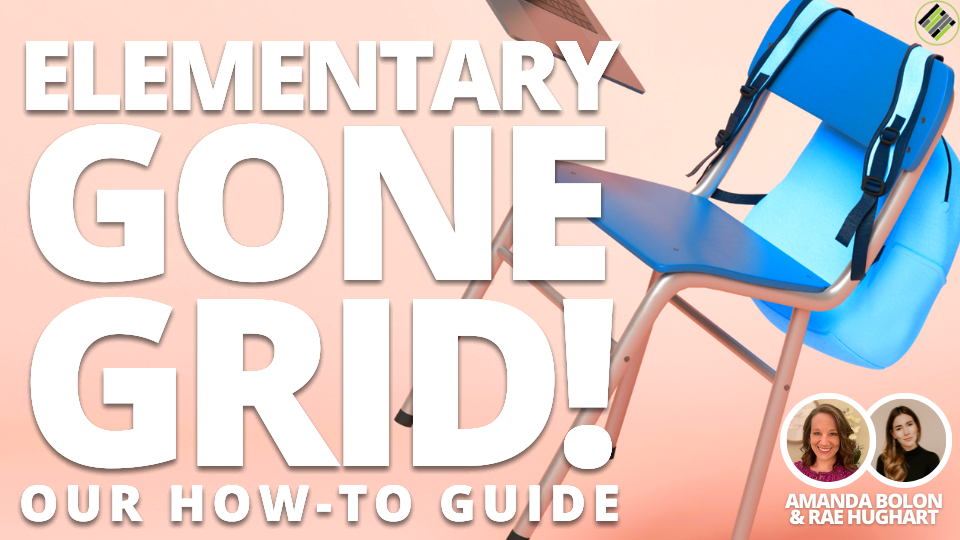
Give Them Loose Parts
This is where the fun really begins! My classroom is full of random odds and ends that I call loose parts. Students know that they have permission to use anything in my classroom for their projects. The only stipulation is that they have to have a plan for how they are going to use the materials before they are allowed to take them off of the shelves. This helps them learn to become intentional about the design of their models and it cuts down on waste. I am constantly amazed by how they can repurpose these items and make them work within their models.
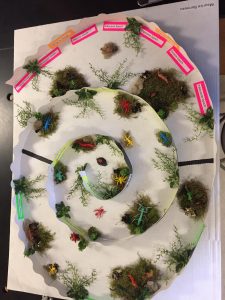
Geologic Time Scale Table Sized Model
Enjoy the Results
One important thing that I do when giving students the creative freedom to try something new that might not work: I don’t penalize them if they are putting forth their best effort and their design falls apart. I have my students explain what they were trying to do and if the science is sound but they just didn’t have the technical expertise to build what they wanted, I will give them full credit for the project.
Again, what I want is for my students to show their understanding of the content. When they see that taking risks and “failing” doesn’t result in punishment, their next project is going to be even better because they will have more confidence to continue thinking outside the box.
These are some of my tips and tricks for using models to assess student understanding of content. Please feel free to share with me your ideas and strategies for developing and using models in your classroom. Even better, tag me on Twitter and share pictures of your students’ work! Hopefully, sharing the amazing models our students create will inspire more teachers to use this strategy with their content. Encouraging students to show their learning through models will help us all Science Better.
About Holly Stuart
Holly Stuart is an 8th grade science and design teacher in South Carolina. Her educational passions include finding new and innovative ways to get more students interested in STEAM, student-inspired discovery through inquiry, and learning science by doing science.
In addition to her out-of-the-box thinking in the classroom, she has successfully implemented The Grid Method into her teaching practice which led to her becoming a Teach Better Team Ambassador. Holly is married to her high school sweetheart and is a mother to three children.
When not teaching, she enjoys traveling and being outside with her family. Some of their favorite outdoor activities include hiking, running, and biking. (Holly often brings her telescope, binoculars, and microscopes with her on hikes!) Her indoor hobbies include reading, coloring, and learning more about sketchnoting and drawing.


